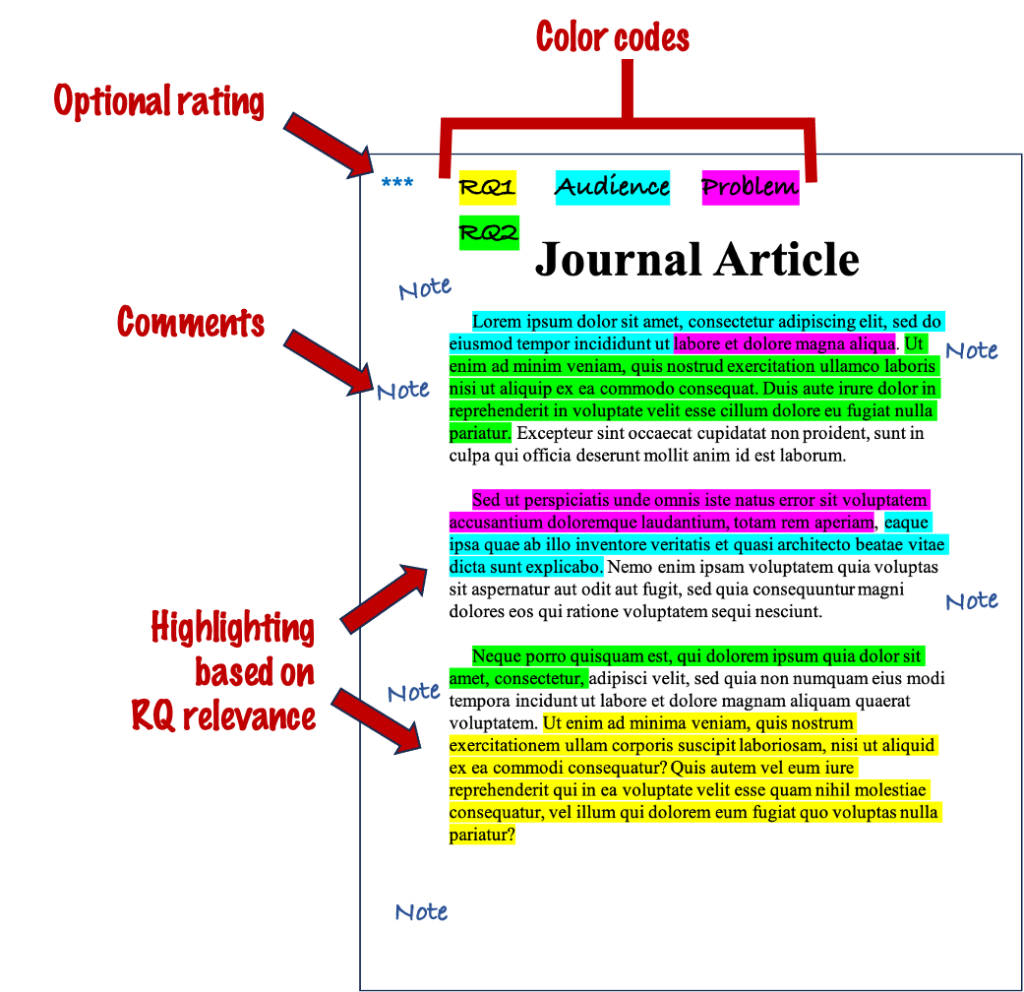8 Annotation & Color Coding
A Real-world Skill
When researching for a literature review, you will read hundreds of pages. As you find material that you can use in your writing, you will need a way to organize that material for future reference. The first step of organization is annotation.
One annotation strategy that works well for me is color coding. As an instructional designer, I review large amounts of information. That information needs to be broken down into categories before I can figure out how to organize it for instruction. I use color coding to tackle the task.
Color-coding Annotation Strategy
Instructions
- Print the article or display the article on your computer screen.
- Read the article, and as you read, highlight theory-related information (RQ1) with yellow, and highlight instructional strategies (RQ2) with green.
- Write notes in the margins to identify other key information.
- You can assign additional colors for information about target audience, assessment, or other things that you deem important. At the top of the page, write color codes that explain what each color means.
- After reading an article, you might find it helpful to give it a rating at the top of the page.
The image below illustrates how the combination of color coding and written annotation can provide rich information for quick reference.


